How to use free weight exercises to build muscle
These free weight exercises will enhance muscle growth and help you lose weight in no time
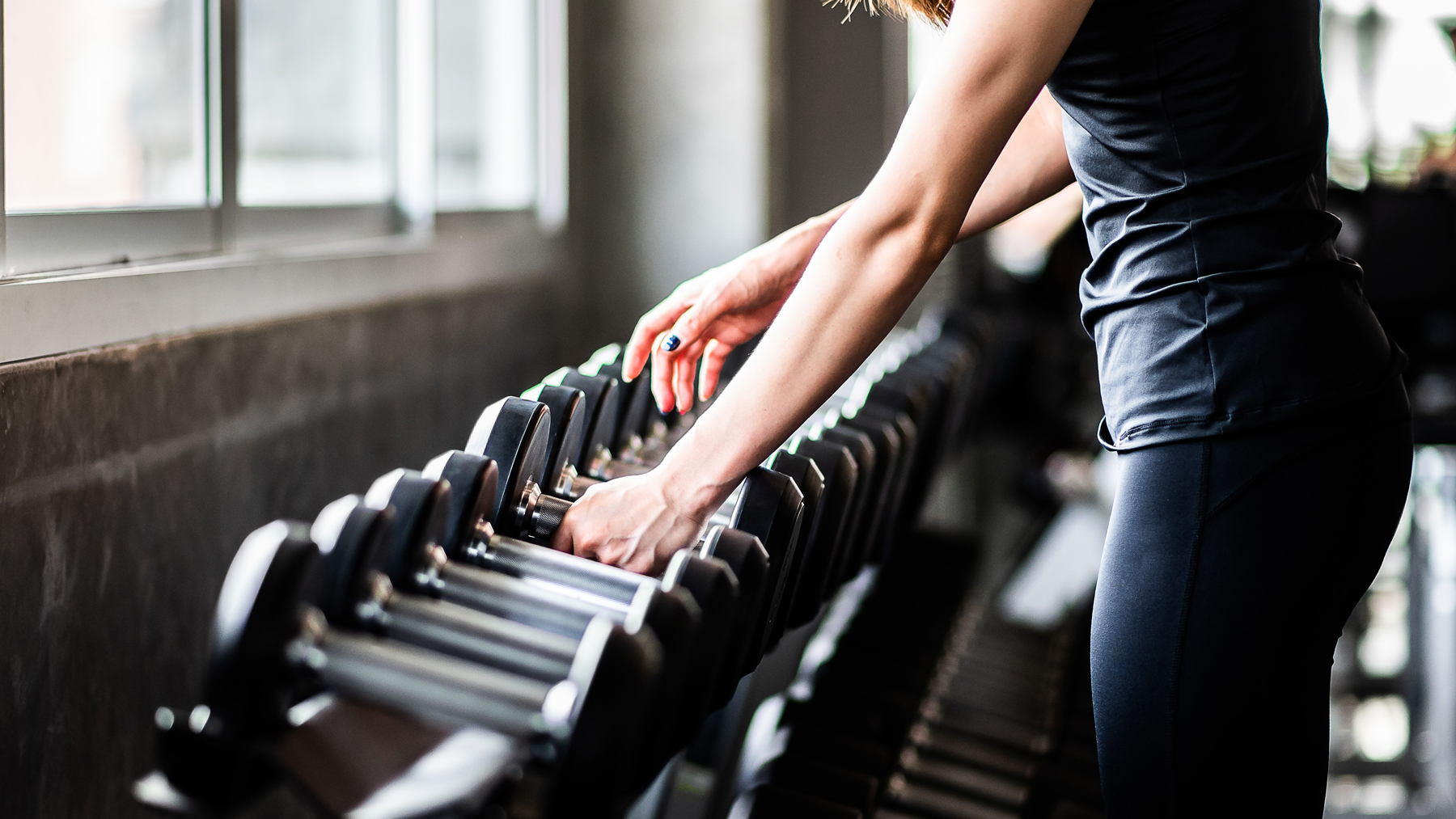
Why should you train with free weight exercises? If you’re looking to build muscle and lose weight, you’ve probably heard that resistance training is the way to go.
More commonly referred to by gym goers as “weight training” or “strength training”, resistance training is basically any form of exercise where you lift or pull against resistance. It usually involves weights or weights machines used for a specific number of repetitions.
Free weight exercises usually make up a big portion of anyone’s weight lifting schedule and is probably the most common type of resistance training that you’ll see happening in the gym. But what exactly are free weights and how do they help build muscle? We tackle these questions in this article, as well as giving you a rundown of the best free weights exercises for building muscle from an expert PT.
Looking for a decent pair of dumbbells to perform these weights exercises with? We’ve got you covered. Check out our guide to the best adjustable dumbbells, which also details how to shop and choose the right dumbbells for you.
What are free weights?
Free weights refer to any training load that isn’t connected to another apparatus or piece of gym equipment meaning you can pick it up and move it to wherever you are. This includes, but isn’t limited to weight plates, barbells, dumbbells, kettlebells, medicine balls, and sandbags.
The most common types of free weights are dumbbells, a short metal bar with a weight at each end, used typically in pairs for a host of exercises including bicep curls, tricep extensions, and overhead presses. Another very common free-weight apparatus is the barbell, which is essentially a longer version of the dumbbell. It comes in various lengths and can be used for exercises such as bench presses, squats, chest presses, or when learning how to deadlift properly.
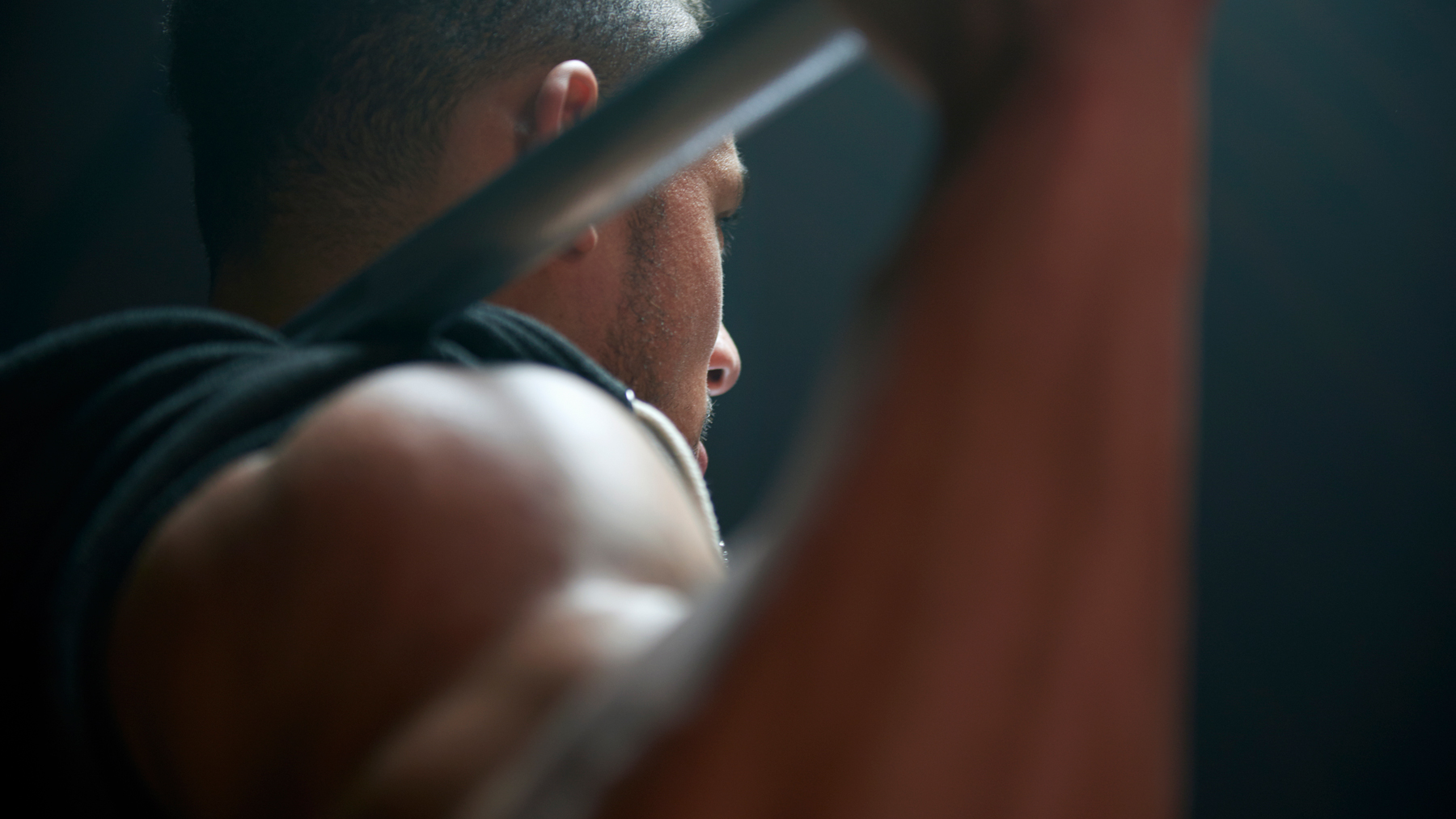
How do free weights help build muscle?
It’s long been established that using free weights can help build muscle, giving you a more toned physique and thus helping you to lose weight. But how do they do this? Les Mills Instructor and PT, Lyndsey Hunter-Long, tells Fit&Well that free weights work by forcing you to use your muscles in a different way that stabilizes movement.
Start your week with achievable workout ideas, health tips and wellbeing advice in your inbox.
“They challenge your muscles to produce force, that’s what makes them grow,” she explains.
“Free weights use the main muscle working and the smaller stabilizing muscles which can have many positive training effects, one of them being muscle growth.”
What’s more, resistance training is known to help with excess fat loss, according to various studies, by increasing after-burn post-exercise, therefore increasing the number of calories we burn at rest.
But how does using free weights differ from weights machines? According to Hunter-Long, machines restrict the range of movement you can achieve versus what is possible with free weights. However, this doesn’t necessarily mean that free weights are better. Both types of resistance training have their benefits.
Generally, you can lift more weight in the same exercise on a machine due to their fixed nature, while free weights give you more bang for your buck in terms of muscles worked.
Take, for example, the findings published in a study by the Department of Movement and Sport Sciences at Vrije Universiteit Brussel, Faculty of Physical Education and Physiotherapy.
This research compared the effect of a resistance training program with machines, free weights, or a combination of both on changes in anthropometrics (the measurement of humans), strength, and functional ability in novice adult males over a 10-week strength training program.
Regardless of the resistance training method, the study found that significant improvements were observed for all groups, all with similar gains in muscularity, strength, and functional ability regardless of the equipment being used and without a fallback when changing from machines to free weights.
How to use free weights to build muscle
So what’s the best way to use free weights to build muscle? Hunter-Long has given us four of her favorite muscle-busting free weights exercises that she says will help with muscle-growth as well as explained how best to perform them.
1. Goblet/Front Squat
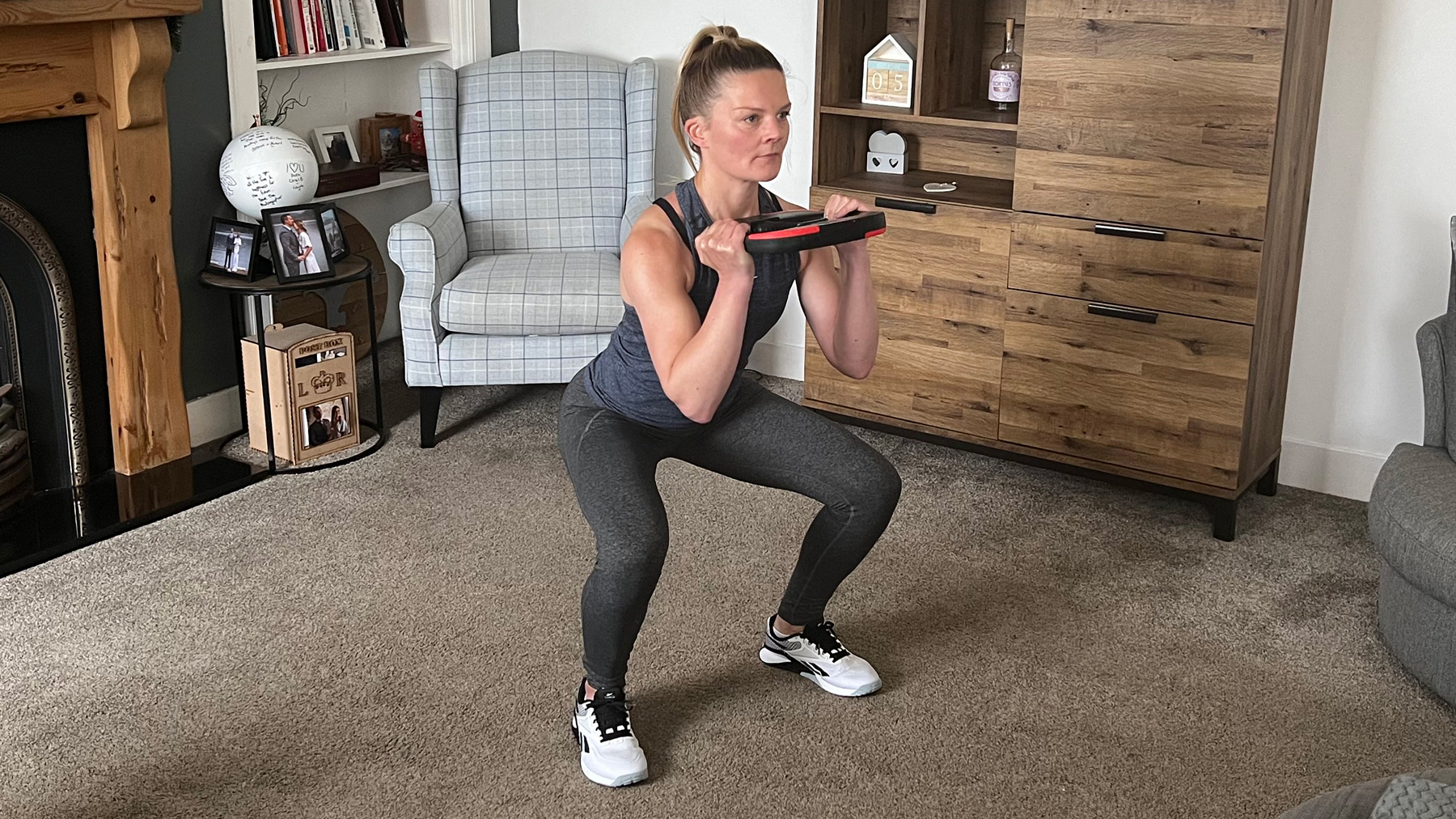
Goblet or front squats are full-body movements. They work your quads, calves, glutes, and entire core, and your arms and grip strength because you're holding onto the weight.
To perform the exercise, hold a weight such as a kettle bell or dumbbell level with collar bone, ensuring feet are just outside hip-width apart and with toes turned out slightly. Keep your chest up and abs tight. Next, sit back your butt, squat down just above knee level and push your knees out while keeping the chest lifted and abs tight.
2. Overhead Press

The overhead press is a big compound lift that’s great for working the shoulders as well the front delts and side delts, which helps to make the shoulders both bigger and broader. Traps, abs, and triceps are also worked hard as part of this exercise, which will stimulate growth in these areas.
To perform this exercise, start with your feet under your hips and hold a barbell. Ensure the bar starts at the collar bone and put a slight bend in your knees while keeping your abs tight.
Next, press the bar from the collar bone to overhead and then return to the start position. That’s one rep.
3. Reverse Lunge with plates
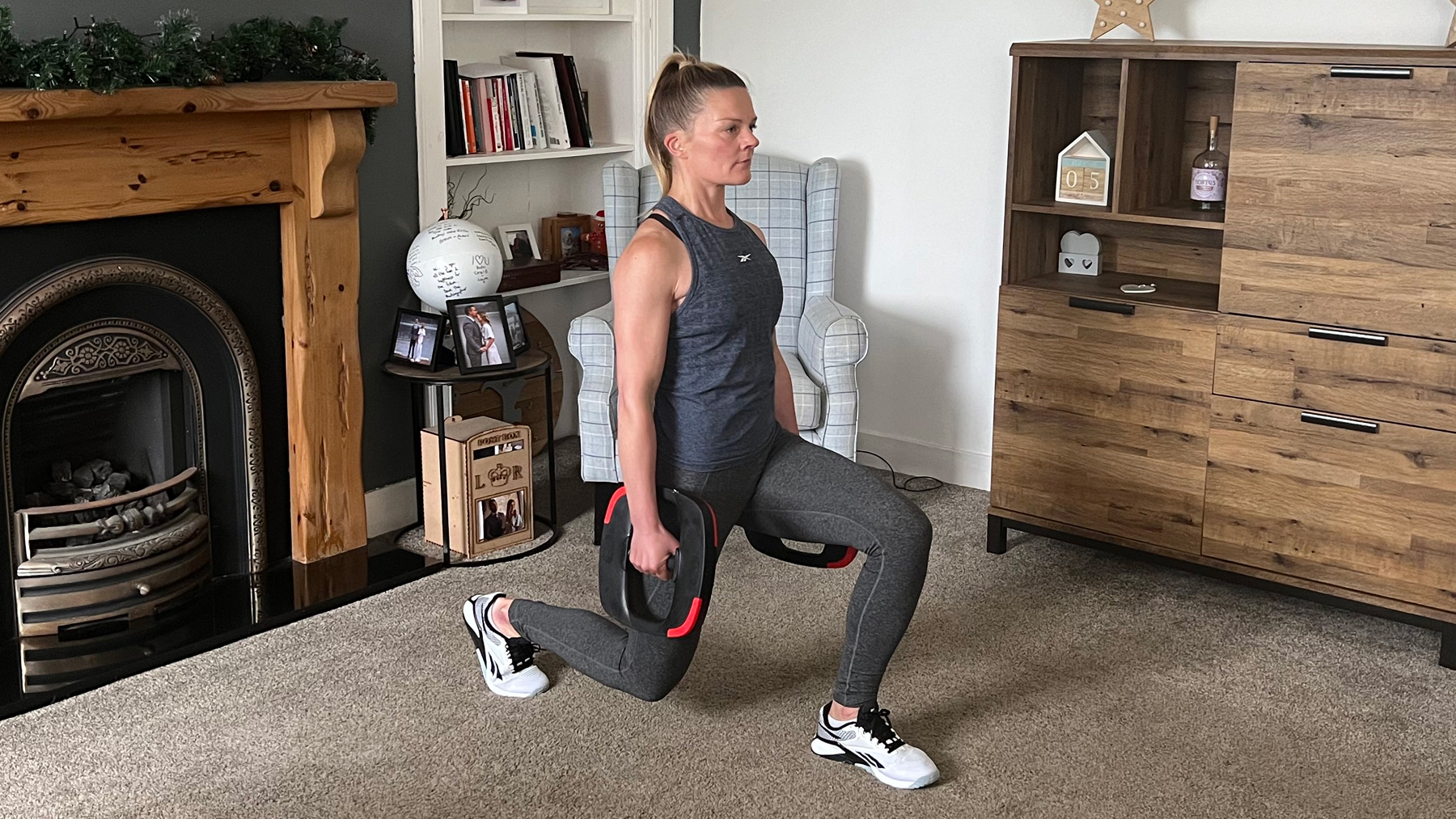
This exercise activates your core, glutes, and hamstrings but puts less stress on your joints than a regular lunge as it gives you more stability in your front leg. This is especially ideal for people who have knee concerns, experience difficulty balancing, or have less hip mobility.
To perform the exercise, hold a weights plate and start with feet hip-width apart. Take a long step back with one leg, and lift the back heel while keeping your chest lifted and abs tight.
Next, lower your back knee down towards the floor while aiming to keep the front thigh parallel. Ensure your front knee pushes out while your chest is lifted. Again, keep your abs tight.
4. Bent Over Row
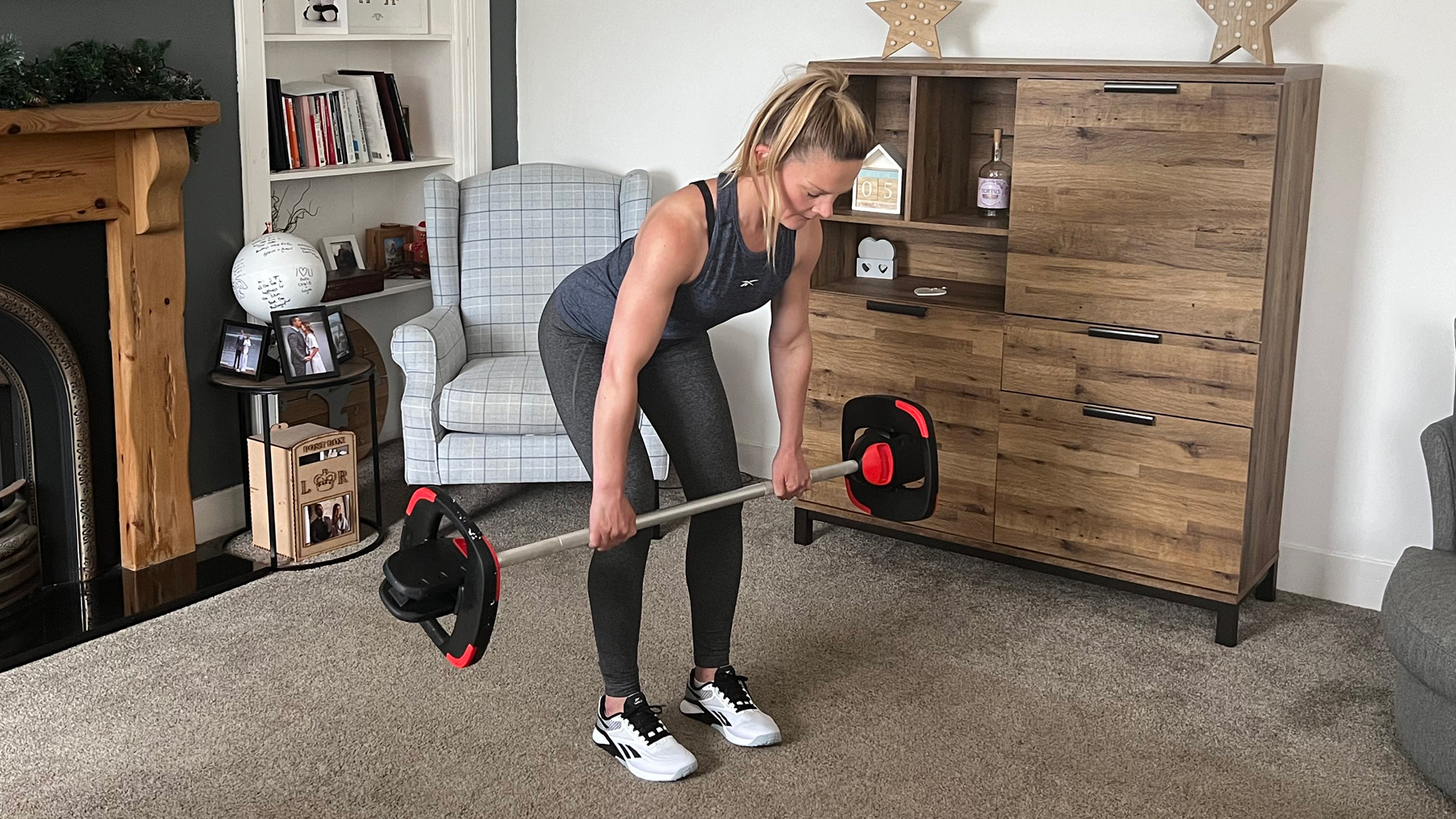
A bent over row exercise isolates the muscles in the back, lats, shoulders, glutes, and hamstrings. This makes it an ideal move for strengthening and stabilizing the shoulders while also strengthening the core.
To perform it, start with your feet hip-width apart. Grab a barbell and using a over-hand grip (holding onto the bar with your palms facing toward your body), keep your chest up and abs tight. Next, tip your upper body forward from hips, and keeping the bar close to your legs, pull it from the knees line in towards belly button.
Lee Bell is a London-based journalist, copywriter, specializing in all things tech and lifestyle. He is also a qualified personal trainer. He started his journalism career a decade ago as a reporter covering the latest gadgets and innovations at tech tabloid The Inquirer. Lee went freelance in 2016 to broaden his expertise, moving into news, reviews and feature writing for a host of national print and online lifestyle titles such as GQ, Forbes, Esquire, Men’s Health, Wired, The Metro, and The Mirror. He has an insatiable appetite for travel, Dharma yoga, and the odd outdoor challenge.

